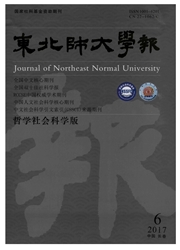

 中文摘要:
中文摘要:
赋税是古代埃及国家得以正常运转的前提。在古代埃及,赋税征收的形式主要是粮食、牲畜或其他商品,而劳役则是赋税的另一种形式。"Smw"税和"Sayt"税以及"B3kw"税等是古代埃及的主要税收类型。税收的管理包括估税、征收、运送,储藏和分配等几个环节。在古代埃及历史上的某些时期,州长、法官、神庙不需缴税或只需缴纳一部分税。古王国时期埃及的赋税征收两年一度进行,新王国时期,埃及赋税征收每年一度。与此同时,后期埃及时期,赋税开始以银子等货币的形式进行征收,但是直到托勒密埃及和罗马埃及时期,赋税才开始全面货币化。
 英文摘要:
英文摘要:
Tax is the premise.under which the state could operate normally in ancient Egypt.In ancient Egypt,taxation was levied by the forms of grain,livestock,and other goods,while labour was another form of taxation.Smw tax and Sayt tax as well as Bakw are the major tax types.Tax administration was included in tax assessment and collection,transport,storage and distribution,while in some period,governors,judges and temple did not need to subject to tax or pay only part of tax.During the old Kingdom,taxes were levied every two years.Up to the new Kingdom,taxes became into once a year.Meanwhile,in the late period,silver became one of tax's forms.But until the Ptolemaic dynasty and Roman period,taxes began a comprehensive monetized.
 同期刊论文项目
同期刊论文项目
 同项目期刊论文
同项目期刊论文
 期刊信息
期刊信息
